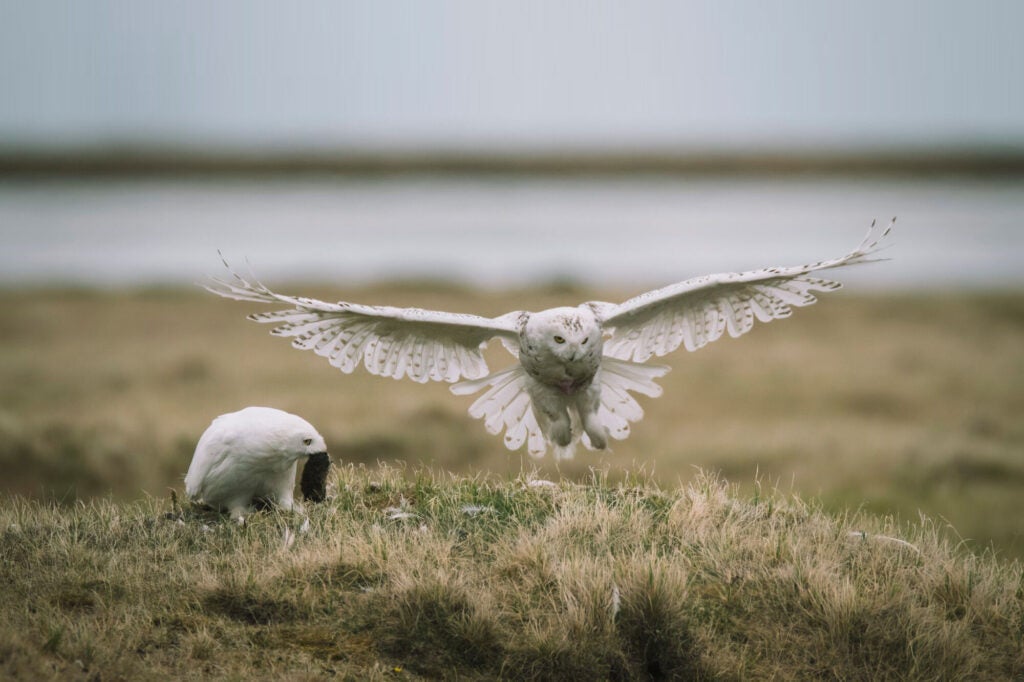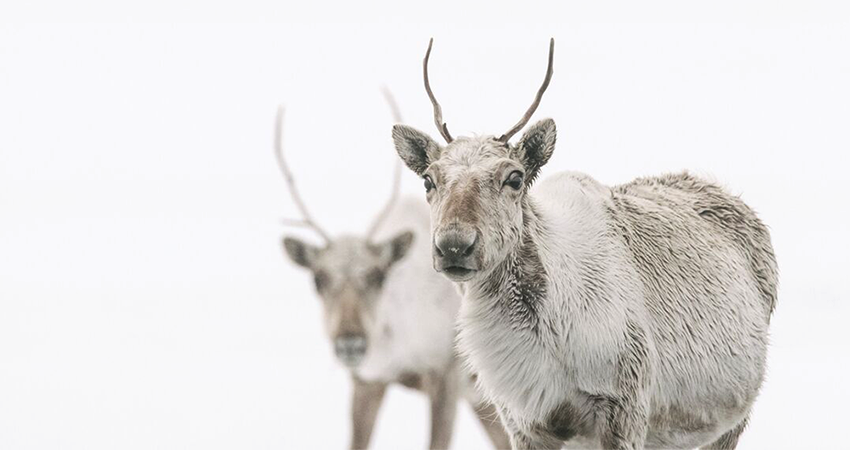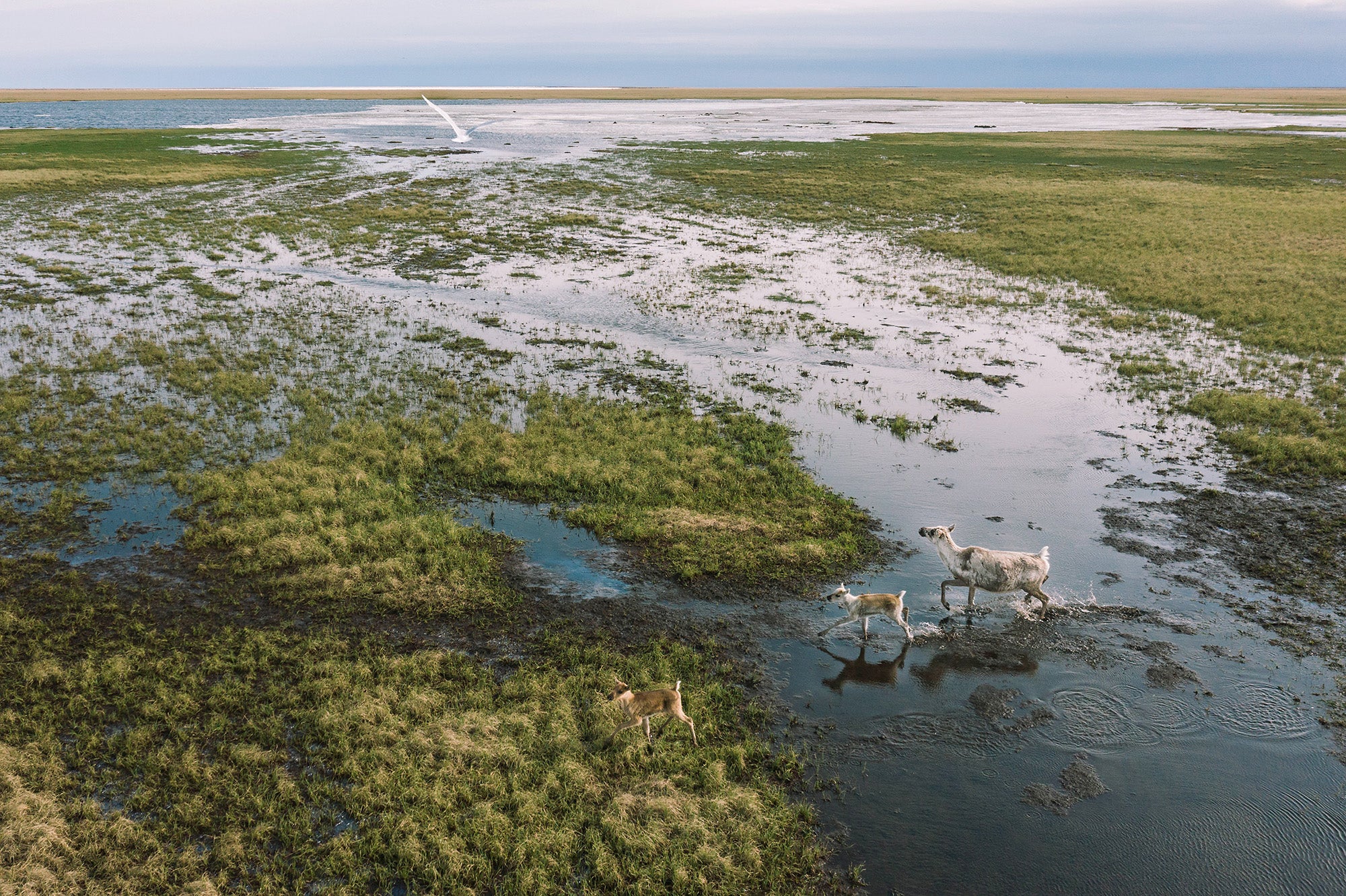New Protections Within Reach for Vast Areas of the Western Arctic
More than 200,000 people call on Interior to expand protections against oil and gas drilling.
Last spring, several years of advocacy by the environmental community and Alaska Native groups culminated in the U.S. Department of the Interior’s adoption of a new rule that can facilitate better protection of ecologically critical areas in the Western Arctic, Alaska’s largest public lands area. Since July, over 200,000 people have called on the U.S. Department of Interior to take the next step and implement the regulation to bolster protections from oil drilling harms in the region’s most critically important areas for caribou calving and migration and for traditional subsistence harvesting.

A pair of snowy owls in the Western Arctic, in the area close to Teshekpuk Lake. (Kiliii Yuyan for Earthjustice)
The Western Arctic is a uniquely important landscape, providing millions of acres of biologically rich habitat. It sustains the largest caribou herd on the planet, iconic species such as polar bears, millions of migratory birds hailing from every continent, and traditional subsistence practices that have existed for millennia. Yet the Arctic faces intense pressure from climate change and oil development, so time is of the essence to protect the region’s irreplaceable lands and take meaningful steps to transition away from oil development there.

A petroleum drill site operates in Alaska’s Western Arctic, near Teshekpuk Lake. (Kiliii Yüyan for Earthjustice)
The Arctic is warming four times faster than the rest of the planet, and the consequences of rising temperatures in this region are far-reaching: Problems like permafrost thaw, rising sea levels and ice melt, and coastal erosion can jeopardize communities’ safety while accelerating the climate crisis. At the same time, pressure is growing to ramp up oil and gas industrialization here. Even Project 2025, a playbook created by the Heritage Foundation, specifically targets the Western Arctic by calling for the expansion of ConocoPhillips’ massive Willow oil-drilling project — already the largest proposed oil drilling project on public land in the United States. Project 2025 also envisions opening vast new acreage in the Western Arctic to oil leasing and development, including in ecologically sensitive areas like the Teshekpuk Lake region.
Securing these new protections is particularly important to the Alaska Native people who have weighed in to explain how this will help them continue with subsistence practices. For generations, they have relied upon caribou and other Arctic wildlife and plants for traditional hunting and harvesting practices. Expanding protections for these resources from oil industrialization will help preserve a way of life that’s been practiced by these individuals and their families since time immemorial.

Photo of two caribou in the Western Arctic by the Teshekpuk Lake area. (Kiliii Yuyan for Earthjustice)
People seeking to protect the Arctic were encouraged when the Biden administration adopted a new rule in April that could establish long-term protections for the Western Arctic’s most sensitive landscapes. In July, the administration began seeking public input on possible future actions to expand existing or designate new “Special Areas” within the region. “Special Area” designations are intended to create stronger safeguards against new development for places that are important for subsistence hunting and harvesting, serve as important wildlife habitats, and have high recreational, historical, cultural, or scenic values.
In response to its request for input, Interior received an abundance of scientific evidence, traditional Indigenous knowledge, and individual comments from people who care about protecting the Arctic &,dash; amounting to over 200,000 voices championing the expansion of Special Areas. With this feedback in hand, it’s now time for Interior to finish what it set out to do by moving forward to propose and finalize these new land protections.

Earthjustice’s successful litigation led to critical protections for Teshekpuk Lake, one of the most ecologically important wetlands in the Arctic. (Kiliii Yuyan for Earthjustice)
Opened in 1978, our Alaska regional office works to safeguard public lands, waters, and wildlife from destructive oil and gas drilling, mining, and logging, and to protect the region's marine and coastal ecosystems.
